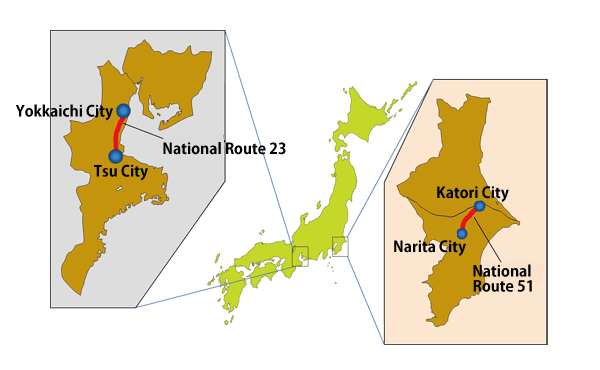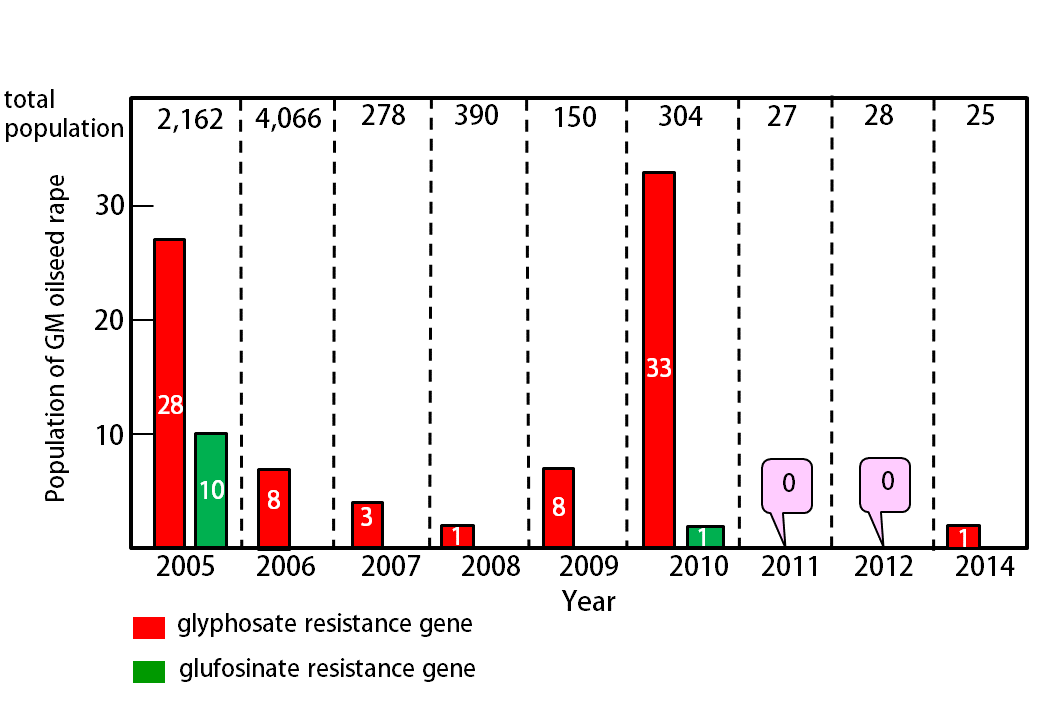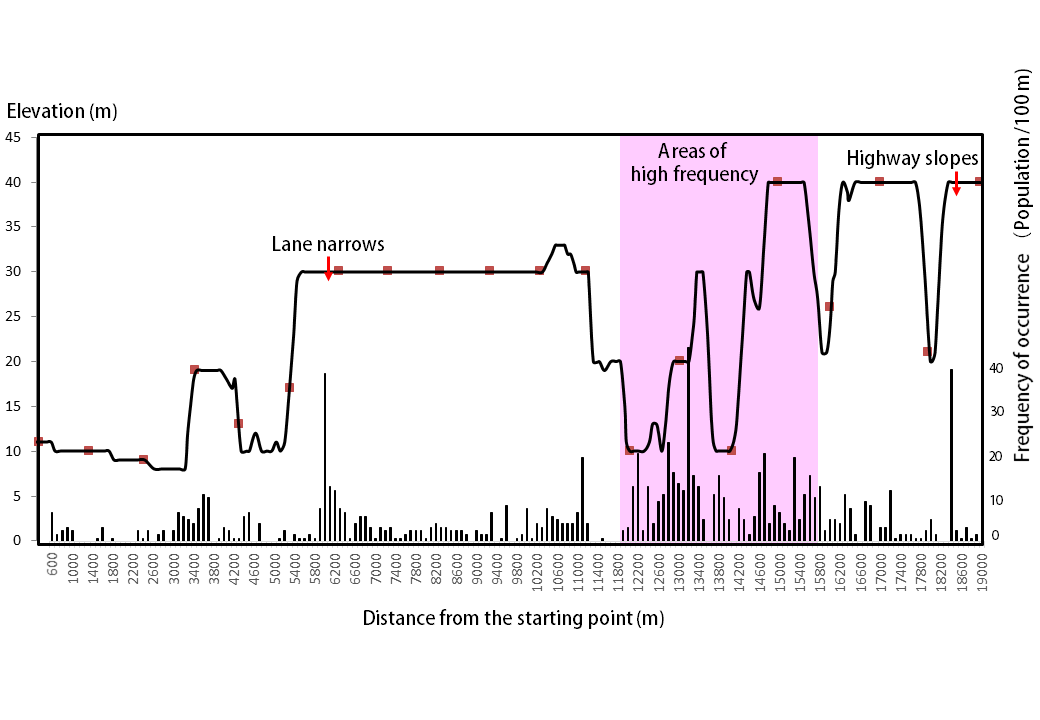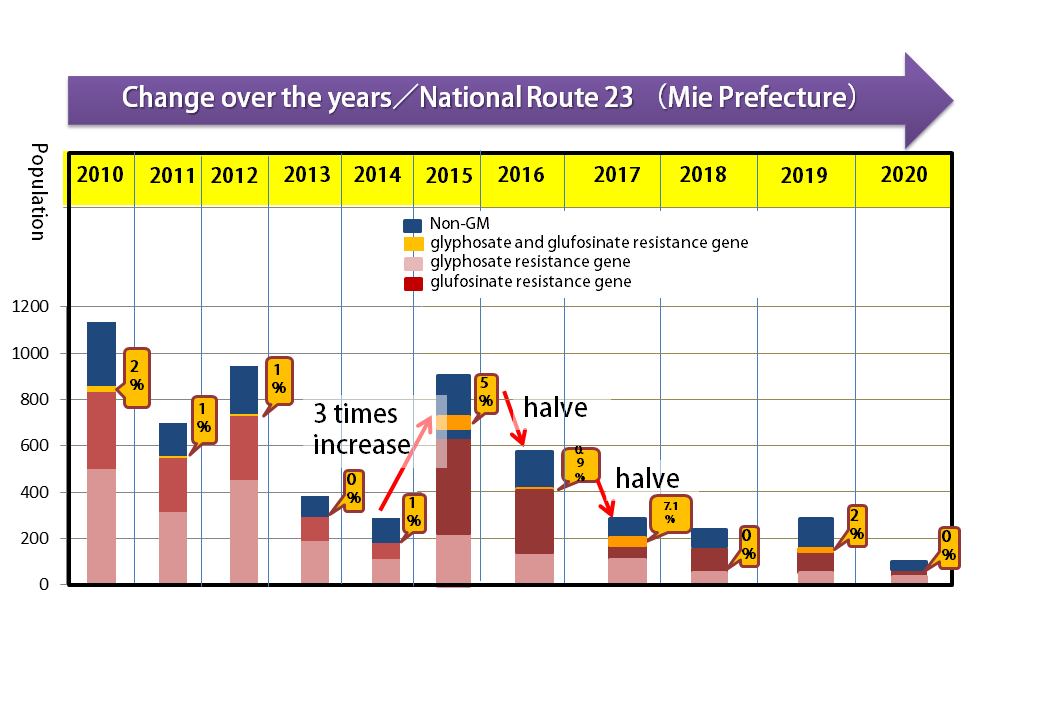
background
Genetically modified (GM) crops were first commercialized in the US in 1996. The cultivated area for GM crops has grown more than 100-fold in 25 years and is expected to continue to grow. In 2019, 77% of soybean, 32% of corn, 30% of oilseed rape, and 80% of cotton in worldwide production were genetically modified for herbicide and pest resistance.
In Japan, GM crops are not commercially cultivated, but since we rely on imports for most of our food, seeds of GM crops imported for processing and other purposes are dispersing during transportation and growing in the field. In addition, as the percentage of GM crop imports increases due to the expansion of GM crop cultivation areas overseas, the distribution of GM crops is expected to expand. However, their long-term growth status is not known. Furthermore, there are concerns that if hybrids are formed between GM crops and native species, the distribution of recombinant genes will expand rapidly and have a negative impact on native species.
Japan has signed the Cartagena Protocol on Biosafety, an international agreement to prevent adverse effects on biodiversity caused by the transboundary movement of genetically modified organisms (GMO). Parties that are signatories to the Cartagena Protocol have to report on their monitoring systems and the spills of GMO at the biennial Meeting of the Parties to the Cartagena Protocol on Biosafety (MOP). The Ministry of Agriculture, Forestry and Fisheries (MAFF), the Ministry of the Environment (MOE), and NIES are cooperating to conduct a survey on the growth of GM oilseed rape caused by spillage.
The Nagoya-Kuala Lumpur Supplementary Protocol was adopted at MOP5, held in Nagoya in 2010. Under the Protocol, when a GMO causes adverse effects on the conservation and sustainable use of biodiversity, the competent authority (country) shall determine the response measures to be implemented by those involved in the management of the GMO. In addition, the national government can take the place of the managers if they are unable to implement response measures, and the national government has the right to recover the costs from the managers.
Overview of Monitoring
NIES has been continuously monitoring GM oilseed rape for 10 years, from 2005 to 2014 on National Highway 51, and since 2010 on National Highway 23. We are investigating the total population and GM percentage of oilseed rape in the study area, their long-term fluctuations, and differences in growth conditions depending on the location.
Methods of Monitoring and Analysis
Monitoring point
Along the east side of National Route 51 (an approximately 20 km section between Katori City and Narita City, Chiba Prefecture)
Along the upper and lower lanes of National Route 23 (approximately 10 km in five sections between Yokkaichi City and Tsu City, Mie Prefecture)

Monitoring period
National Highway 51: April 2005 - April 2014 (mid-April to late May of each year)
National Highway 23: April 2010 - Ongoing
Monitoring method
We walked along the road in the study area and visually searched for oilseed rape. The locations where oilseed rape was found were recorded, and one or two leaves were collected from each individual and brought back to the laboratory.
Analysis method
- The collected leaves were dried and stored.
- Approximately 10 mg of tissue was cut from each leaf, placed in a microtube, and homogenized with water (0.5 mL).
- Reveal test paper (NEOGEN) or Trait LL test paper (Strategic Diagnostics Inc.) was dipped into the supernatant and checked for positive reaction by herbicide resistance protein after 10 min.
- DNA was extracted from individuals in which the presence of herbicide-resistant protein was confirmed.
- PCR primers were designed from the sequences of the promoter of transgenes, the glyphosate resistance gene (CP4-EPSPS), and the glufosinate resistance gene (PAT), which are registered in the DDBJ (Japan Data Bank). PCR was performed using these primers, and DNA was extracted as a template. The amplified DNA was purified and its sequence was examined to confirm the herbicide resistance gene.
Reports
1.Population changes of GM oilseed rape over time
Fig. 2 shows the number of genetically modified (GM) oilseed rape populations identified between FY2005 and FY2014. Red and green indicate the number of oilseed rape populations resistant to glyphosate and glufosinate, respectively.
The number of GM oilseed rape populations identified in FY2011 and FY2012 was zero. Only one individual was found in FY2014. The total population of oilseed rape dramatically decreased from 2,162 in FY2005 to 25 in FY2014.

2.Characteristics of the distribution of native oilseed rape
Fig. 3 shows the frequency of occurrence of native oilseed rape and the elevation of the surveyed sections. Three high-frequency areas were identified. One of these areas was the one where the road narrows. The second area features frequent hills, likely where seeds spill from trucks as they decelerate or accelerate. The third was in a fenced patch, showing that if spilled seeds fall in places where they cannot be managed, they can perpetuate.
Along Route 51, the total number of GM populations plummeted after 2011. After that, the survey was terminated in FY2014 because the surrounding environment was significantly modified by the construction of a new expressway.

Population change of GM oilseed rape along National Highway 23 over time
Fig. 4 shows the populations of oilseed rape confirmed between FY2010 and FY2020 and the breakdown of GM. Along Route 23, the percentage of GM was very high, at more than 70% every year. Although the total population is on the decrease, the survey is being continued because of the large annual variation.

参考文献
Nakajima N., Nishizawa T., Aono M., Tamaoki M., Saji H. (2020) Occurrence of spilled genetically modified oilseed rape growing along a Japanese roadside over 10 years. Weed Biology Management, 20, 139-146
Nishizawa, T., Nakajima, N., Tamaoki, M., Aono, M., Kubo, A., Saji, H. (2016). Fixed-route monitoring and a comparative study of the occurrence of herbicide-resistant oilseed rape (Brassica napus L.) along a Japanese roadside. GM Crops Food, 7, 20-37
Nishizawa T., Tamaoki M., Aono M., Kubo A., Saji H., Nakajima N. (2010) Rapeseed species and environmental concerns related to loss of seeds of genetically modified oilseed rape in Japan. GM Crops, 1(3), 143-156
Nishizawa T., Nakajima N., Aono M., Tamaoki M., Kubo A., Saji H. (2009) Monitoring the occurrence of genetically modified oilseed rape growing along a Japanese roadside: 3-year observations. Environ. Biosafety Res., 8(1), 33-44
Research Staff
NAKAJIMA Nobuyoshi、AONO Mitsuko
Last updated Jul. 16, 2021

